Masterpiece Story: Portrait of Madeleine by Marie-Guillemine Benoist
What is the message behind Marie-Guillemine Benoist’s Portrait of Madeleine? The history and tradition behind this 1800 painting might explain...
Jimena Escoto 16 February 2025
Water Lilies is a masterpiece of Impressionism. It blends the artist’s objective world and subjective experience.
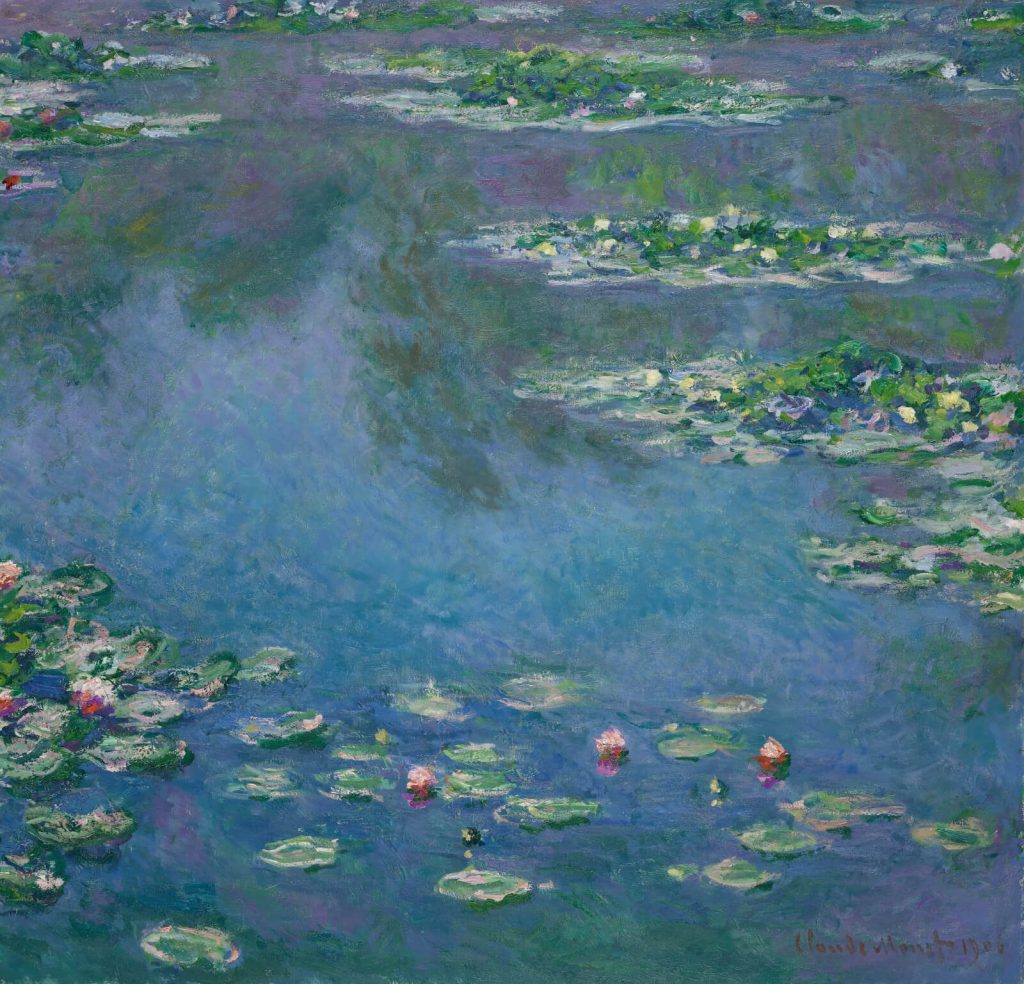
Claude Monet, Water Lilies, 1906, Art Institute of Chicago, Chicago, IL, USA.
Claude Monet (1840-1926) is one of the most famous painters known today. His works represent the epitome of Impressionism which has gained global appreciation. The Impressionist movement began in the 1860s in the atmosphere of an urbanized and industrialized Paris. Impressionist painters, like Monet, focused on capturing impermanent moments. They desired to depict the fleeting interactions between light and color through the filters of time and weather. They wanted to seize the impression of a moment. Claude Monet’s Water Lilies is a masterpiece of this movement.
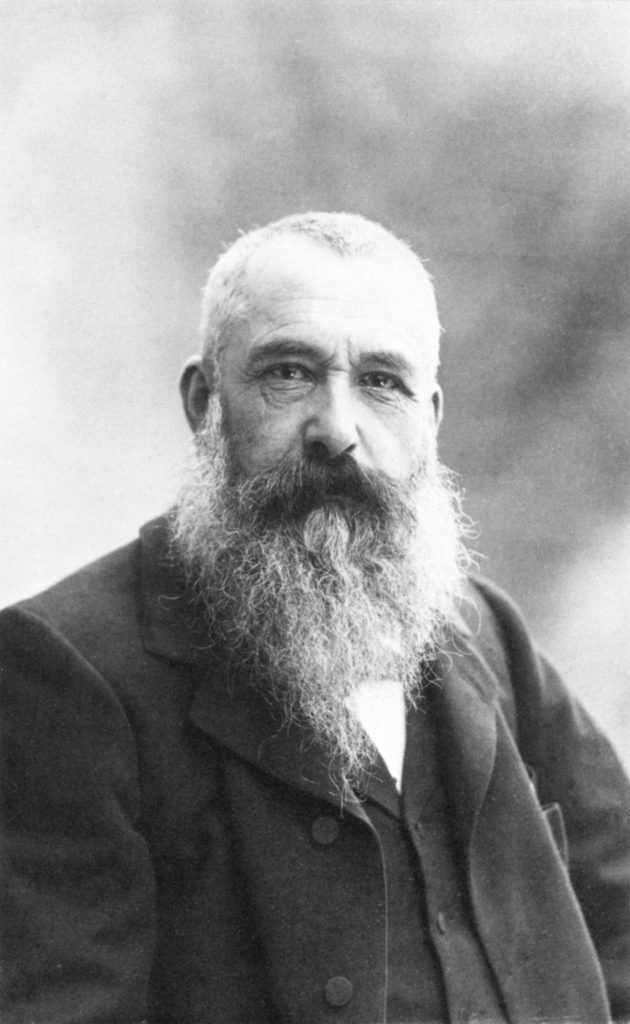
Paul Nadar, Claude Monet, 1899, albumen print, RISD Museum, Providence, RI, USA.
Claude Monet painted Water Lilies in 1906 when he was 66 years old. He was a mature artist by this time with over 40 years of experience. Water Lilies is an oil on canvas painting measuring an almost-square 89.9 cm high by 94.1 cm wide (35 3/8″ high by 37 1/16″ wide). It explores the simple subject of water lilies floating on water, but do not let its superficial simplicity mask its underlying complexity. For example, many artists painting a water landscape would include a horizon line and a surrounding environment such as the lake’s edge, some nearby bushes, and a few trees. Monet excludes these assumed elements to focus primarily on a single motif. It is as if Monet has cropped a detail from a larger image.
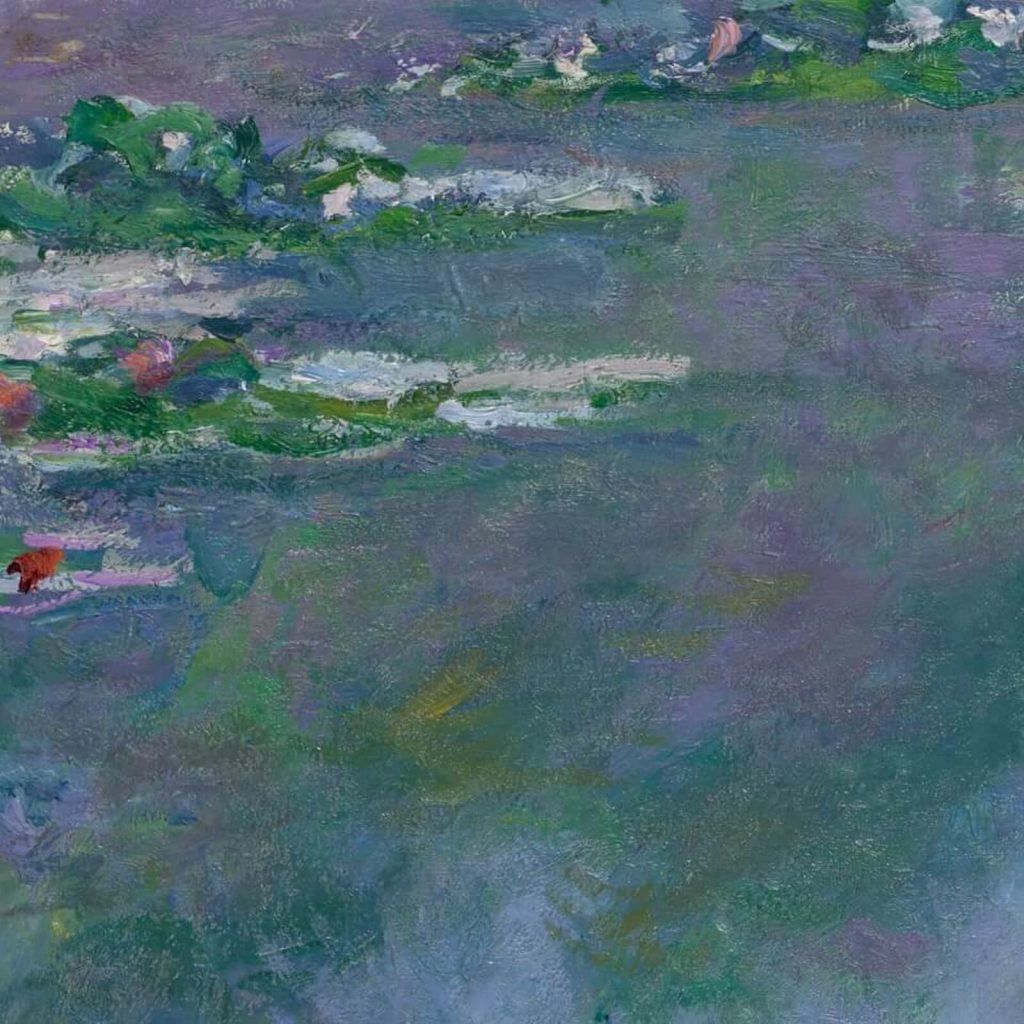
Claude Monet, Water Lilies, 1906, Art Institute of Chicago, Chicago, IL, USA. Detail.
Within Monet’s “cropped detail” of a painting, there are many water lilies seemingly randomly placed upon the canvas. However, there is nothing random to their placement. There are methodical patterns Monet used to create visual interest and movement. Place a grid (orange) over the painting to divide it into nine equal sections. The upper left four sections form a circle (yellow) where the edges of the water lilies imply an empty space of water. Meanwhile, the middle left two sections from an oval (red) where again the water lilies imply a negative space. The circle and oval move the eye around the skirting edges of the plants. They subsequently create movement in an otherwise still life painting.
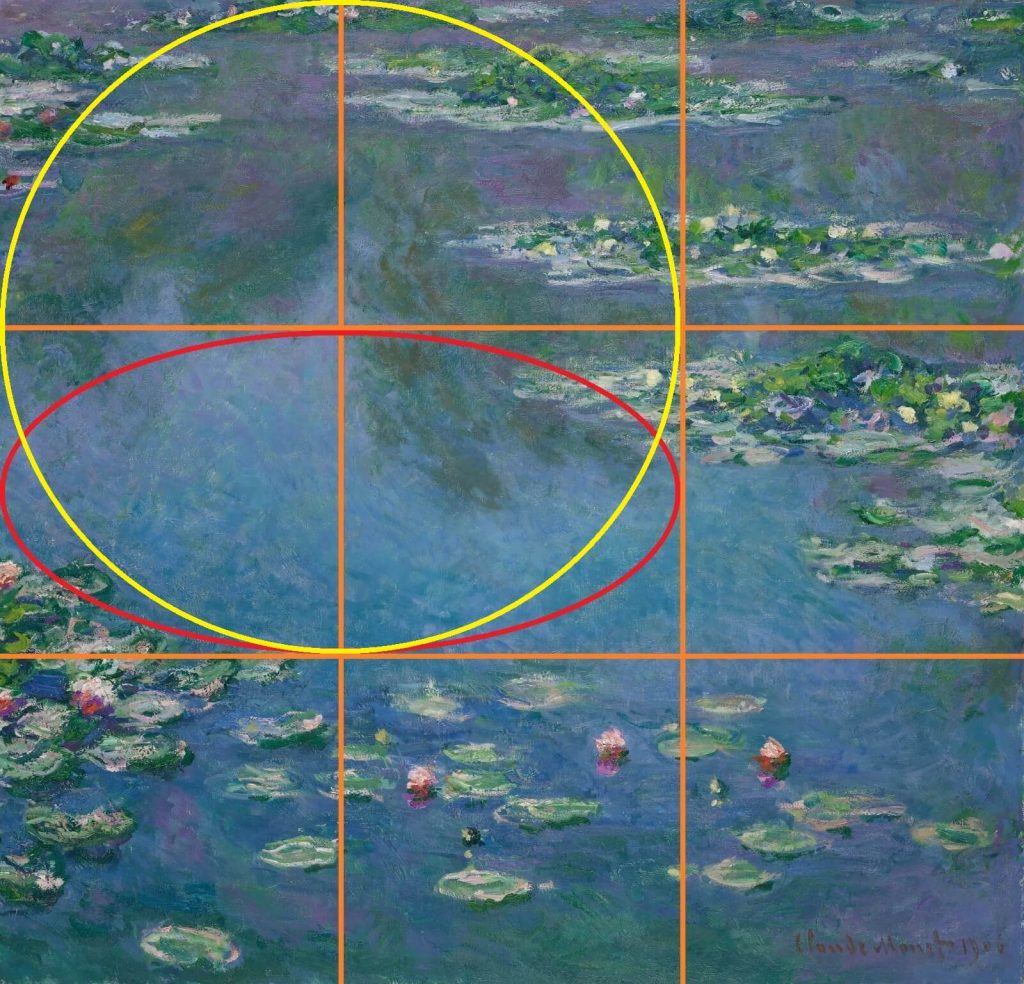
Overlays. Claude Monet, Water Lilies, 1906, Art Institute of Chicago, Chicago, IL, USA.
There are two main groups of water lilies in the painting. One cluster is in the right region and one cluster is in the bottom region. Draw lines (orange) along the right cluster’s left edge and the bottom cluster’s top edge. These two diagonal lines travel across the entire canvas and funnel interest toward the bottom right corner. Interestingly, using the previously discussed grid lines, the two diagonal lines intersect at a point one-third of the canvas width and one-third of the canvas height. In artistic terms, this is known as the rule of thirds. It is a rule followed by painters throughout the centuries and now by contemporary photographers.
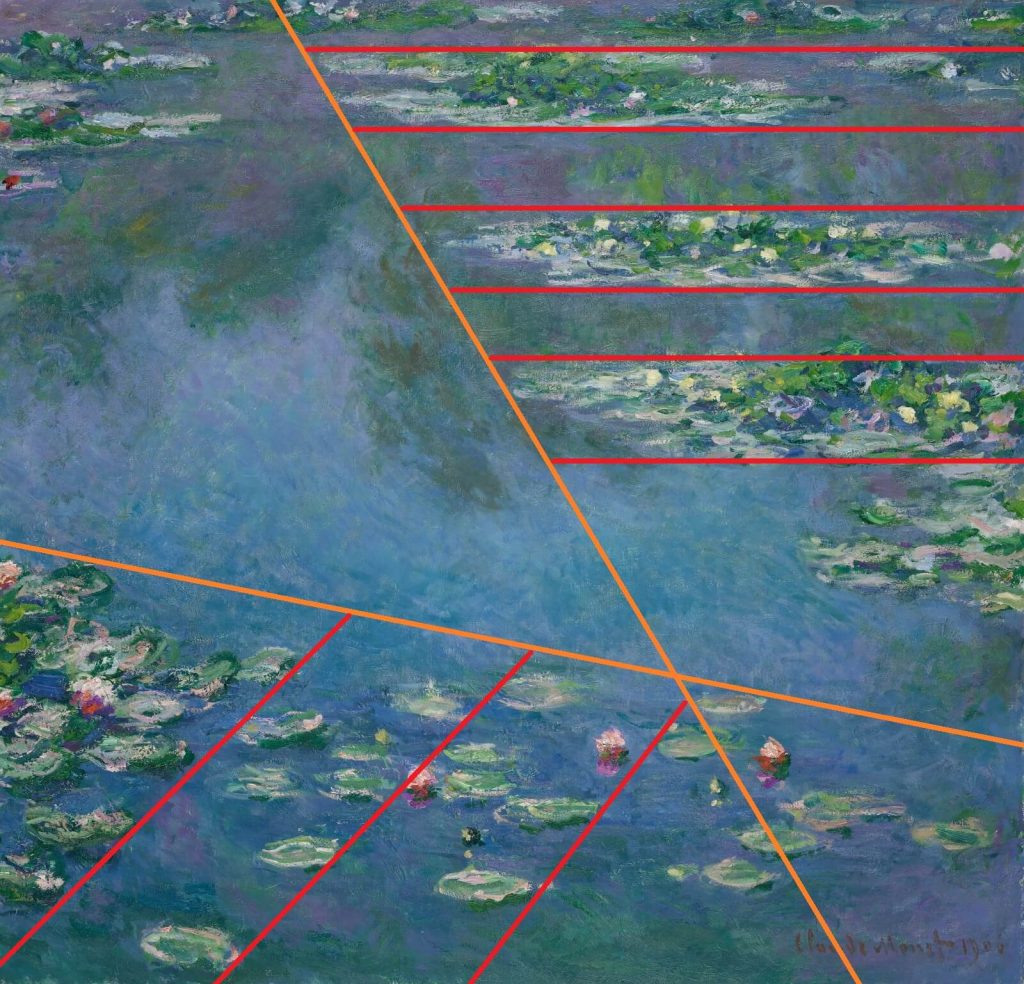
Overlays. Claude Monet, Water Lilies, 1906, Art Institute of Chicago, Chicago, IL, USA.
Draw lines (red) along the right cluster’s top and bottom edges, and the bottom cluster’s left and right edges. Do you see the rhythmic parallel patterns? The eye follows the repetition which increases the visual movement towards the bottom right corner of the canvas. Therefore, Water Lilies has a complex system of geometric patterns. It has circles, ovals, and diagonals that align along a one-third grid. There is nothing random about Monet’s arrangement. It is very intentional.
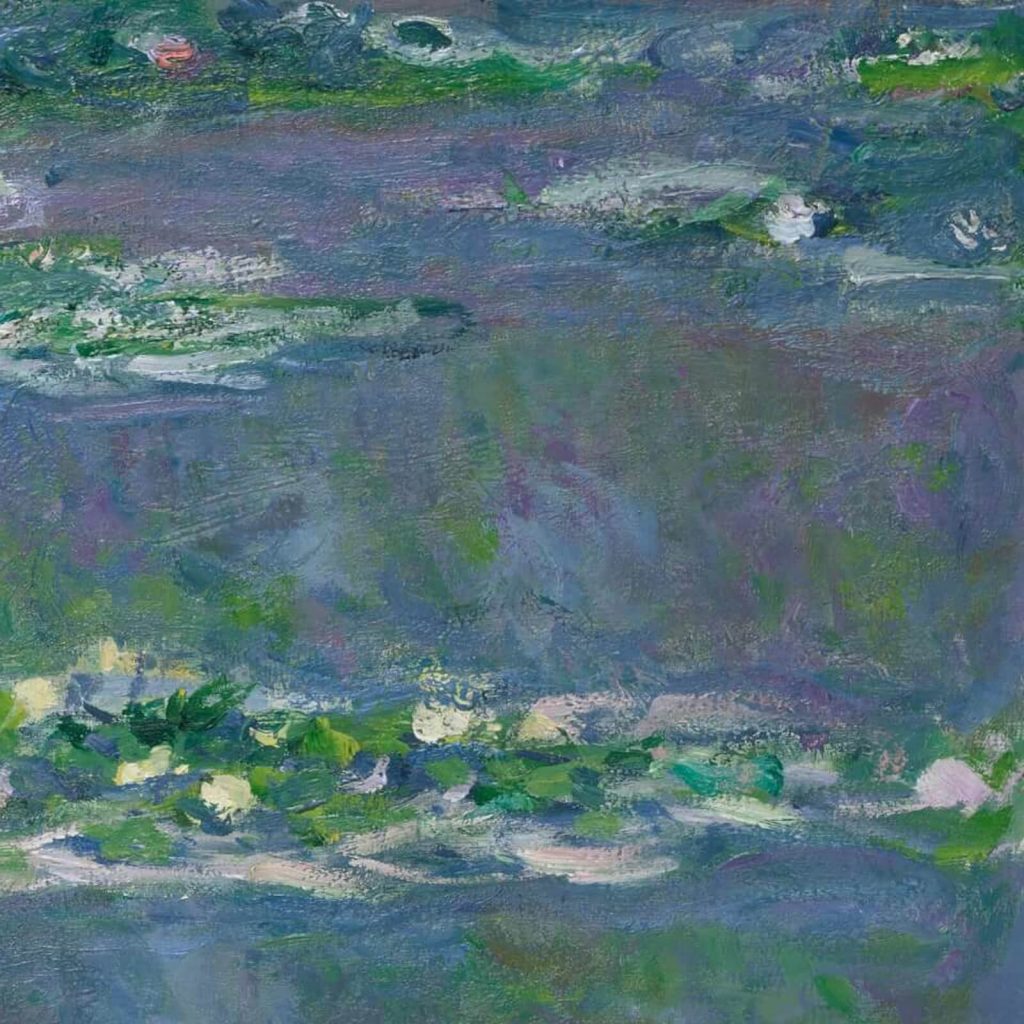
Claude Monet, Water Lilies, 1906, Art Institute of Chicago, Chicago, IL, USA. Detail.
Monet was a rebel, and Water Lilies expresses his rebellious style. Monet’s Academic contemporaries painted indoors, drew preliminary sketches on their canvases, mixed their paints in advance, and used long smooth brushstrokes. Monet was not an Academic artist. He rejected the Academic style upheld by William-Adolphe Bouguereau and Alexandre Cabanel. Monet created en plein air (outdoors), painted without sketches, applied colors directly from the paint tubes, and used short rough brushstrokes.
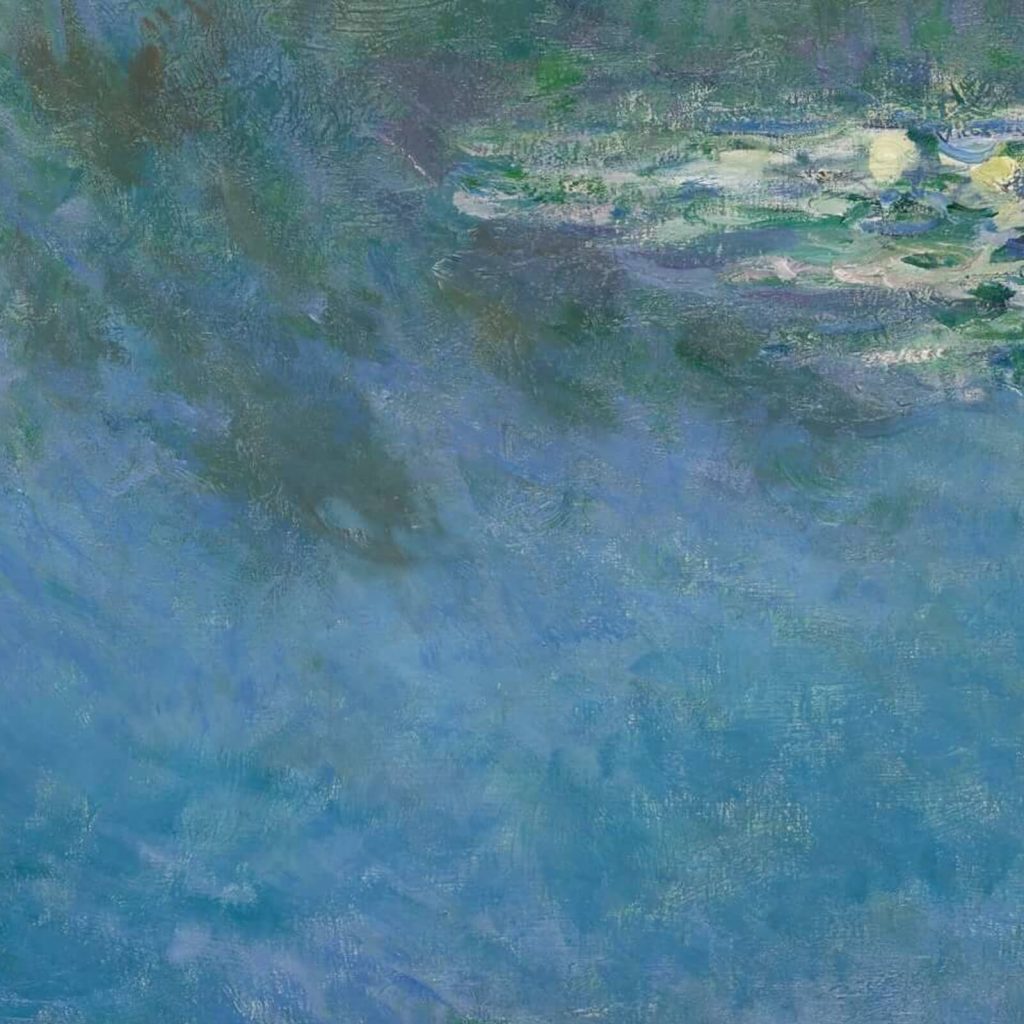
Claude Monet, Water Lilies, 1906, Art Institute of Chicago, Chicago, IL, USA. Detail.
Water Lilies is not a generic subject. It represents Monet’s water garden in Giverny, France. Monet loved to paint in his garden which prompted an extensive collection of water lily paintings. The subject has become iconic and synonymous with Monet. The way that Monet plays between the explicit and implicit objects adds to their beauty. Explicitly the viewer beholds water lilies and water. Implicitly the viewer beholds trees and shrubs as their shadows cast over the water lilies and water. Their shadows create dark purple patches of water, flecked with green edges as the light filters through their foliage. It is a beautiful and thoughtful dance among light, reflection, and shadow.
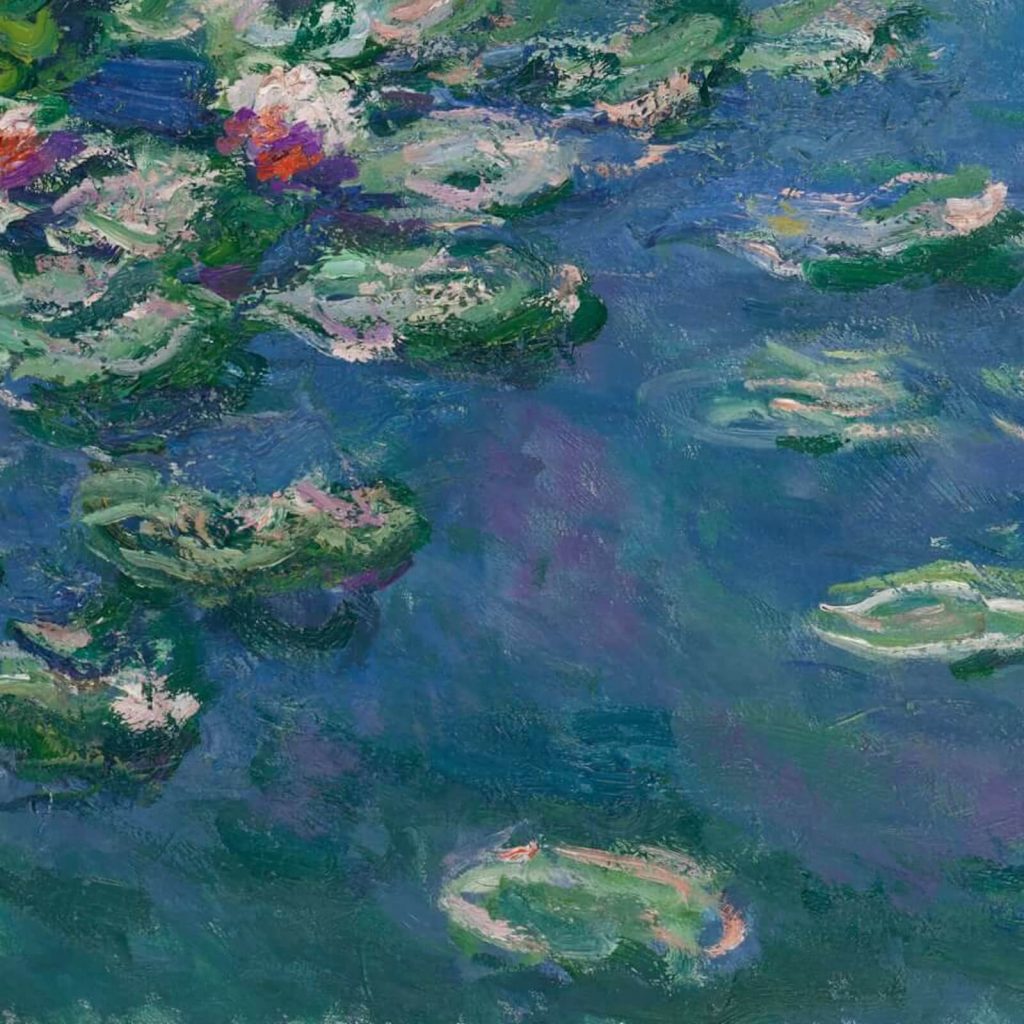
Claude Monet, Water Lilies, 1906, Art Institute of Chicago, Chicago, IL, USA. Detail.
Monet continues to be a beloved artist, and Water Lilies supports his endearment. It is a masterpiece of Impressionism, blending the artist’s objective world and the artist’s subjective experience. It also expresses Monet’s interpretation of his beloved Giverny garden. Water Lilies is an impression. It is Impressionism. It is impressive.
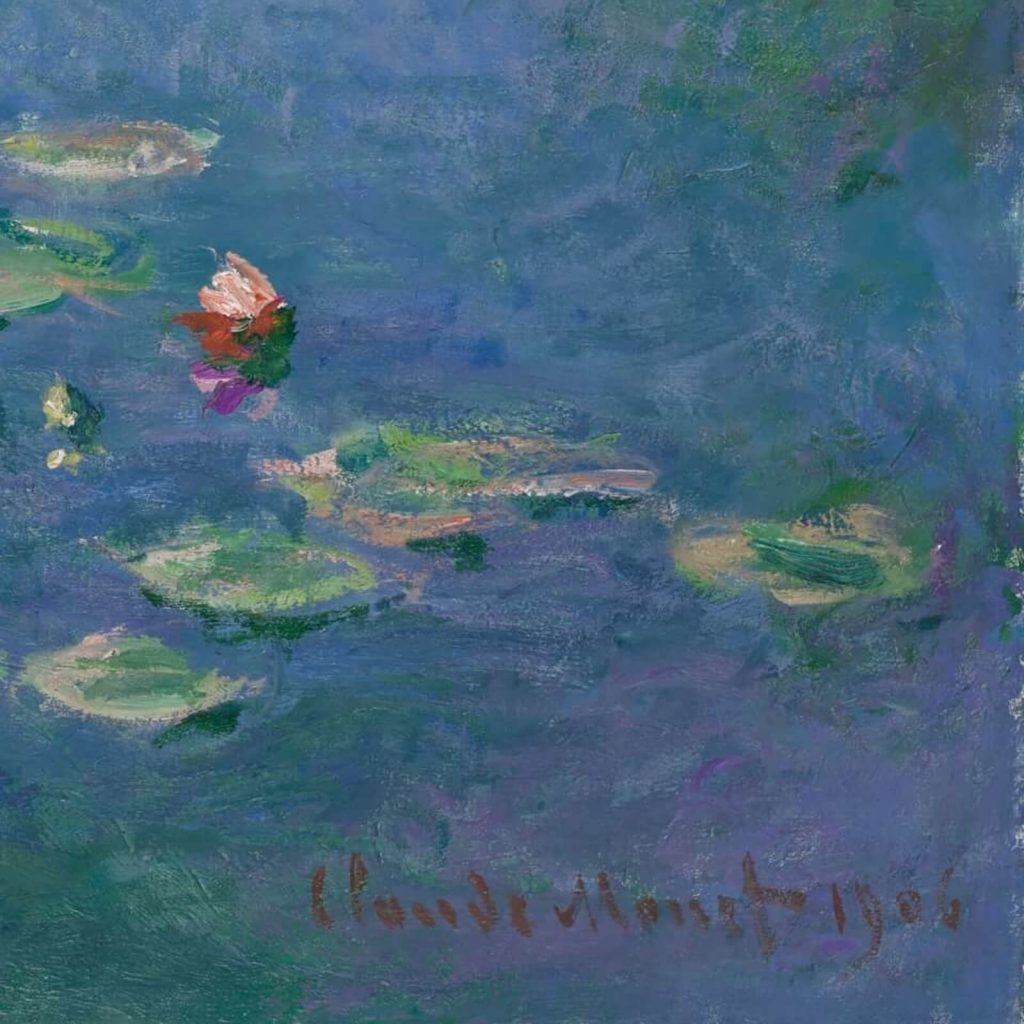
Claude Monet, Water Lilies, 1906, Art Institute of Chicago, Chicago, IL, USA. Detail.
Helen Gardner, Fred S. Kleiner, and Christin J. Mamiya. Gardner’s Art Through the Ages. 12th ed. Belmont, CA: Thomson Wadsworth, 2005.
“Water Lilies.” Collection. Art Institute of Chicago. Retrieved 22 October 2022.
DailyArt Magazine needs your support. Every contribution, however big or small, is very valuable for our future. Thanks to it, we will be able to sustain and grow the Magazine. Thank you for your help!